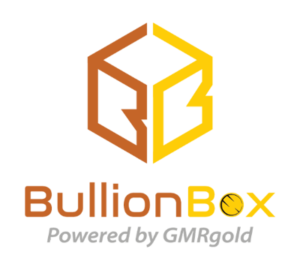Every single day, someone somewhere ruins a valuable gold coin by trying to make it “look better.” It’s heartbreaking.
That shiny 1908 Saint-Gaudens Double Eagle your grandfather left you?
One wrong cleaning attempt could slash its value from $2,000 to $500 in seconds. No joke.
Here’s the thing about gold coins – they’re not like your kitchen silverware. That natural patina you might think looks dirty? Collectors call it “character,” and they’ll pay serious money for it. But sometimes, you genuinely need to clean a coin. Maybe it’s covered in sticky residue from old tape, or perhaps you found it buried in the backyard (lucky you!).
This guide walks you through the safest ways to clean gold coins when necessary, and more importantly, when to keep your hands off entirely. You’ll learn the difference between gentle conservation and value-destroying cleaning.
Critical Points to Remember
- Most gold coins should NEVER be cleaned; this is the golden rule
- Cleaning can reduce a coin’s value by 50-90% – that’s thousands of dollars gone
- Natural patina adds value – what looks like dirt might be worth money
- When in doubt, don’t clean – get a professional opinion first
- Bullion coins have different rules – investment gold vs. collectible gold matters
- Professional conservation exists – sometimes worth every penny
The Million Dollar Question
So, when exactly should you clean a gold coin?
The short answer: almost never.
The long answer involves understanding what you’re dealing with and why cleaning is such a hot-button issue in the coin world.
Think about it this way – would you repaint the Mona Lisa because she looks a bit yellowed? Of course not. Gold coins work similarly. That surface you’re looking at tells a story. Every tiny mark, every bit of toning, every microscopic detail contributes to what experts call the coin’s “originality.”
But let’s be real. Sometimes you inherit coins stuck to paper, covered in gunk, or damaged by improper storage. Sometimes you buy bullion coins purely for their gold content. Sometimes you genuinely need to remove harmful contaminants. The trick is knowing the difference between necessary conservation and unnecessary meddling.
Why Cleaning Gold Coins Is Usually a Terrible Idea
Let me paint you a picture. You’ve got this beautiful 1924 $20 Saint-Gaudens gold piece. It’s got some dark spots, maybe looks a bit dull. You think, “I’ll just give it a quick polish.” Twenty minutes later, you’ve turned a $2,500 coin into a $1,200 coin.
Professional coin graders can spot a cleaned coin from across the room. Those tiny hairline scratches your cleaning created? They scream “amateur hour” to anyone who knows coins. Even worse, once you’ve cleaned a coin, there’s no going back. You can’t unclean it. You can’t restore that original surface. It’s gone forever.
The major grading services like PCGS and NGC will either refuse to grade cleaned coins or slap them with a “details grade” that says “this coin has problems.” In the collector market, that’s like wearing a giant “damaged goods” sign.
Before You Touch That Coin
First things first – figure out what you’re dealing with. Not all gold coins are created equal, and knowing the difference could save you serious money.
Grab a magnifying glass (a 10x loupe works great) and find a spot with good lighting. Natural light near a window is perfect. Put on some cotton gloves – your skin oils are enemy number one for coins. Now, take a close look at your coin. What do you see?
Is it a modern bullion coin like an American Gold Eagle or Canadian Maple Leaf? These are primarily valued for their gold content, so that gentle cleaning might be okay. Is it an old, rare coin with a date before 1933? Stop right there and call an expert.
Safe Cleaning Methods (When Necessary)
Maybe it’s a bullion coin with fingerprints, or you’ve got professional guidance. Here’s how to proceed without causing disaster.
The Distilled Water Rinse
Fill a small plastic container with room-temperature distilled water. Not tap water – the minerals and chemicals will cause problems. Gently place the coin in the water and let it soak for a few minutes. No rubbing, no scrubbing, just soaking.
After soaking, hold the coin by its edges (never touch the faces) and rinse with fresh distilled water. Pat dry with a soft, lint-free cloth – don’t rub! Let it air dry completely on a soft towel. This method removes loose dirt and some residues without damaging the surface.
Mild Soap Solution
For stubborn dirt, add a tiny drop of mild dish soap to your distilled water. We’re talking one drop per cup of water. Soak the coin for 5-10 minutes, then follow the same rinse and dry process. The keyword here is gentle. You’re not washing dishes; you’re handling a piece of history.
Some people swear by acetone for removing tape residue or PVC contamination. If you go this route, use pure acetone (not nail polish remover), work in a well-ventilated area, and never soak for more than a minute. This is advanced stuff – if you’re not comfortable with chemicals, skip it.
When Professional Help Makes Sense
Sometimes, paying for professional conservation is the smartest move you can make. If your coin is worth more than $500, seriously consider this option. Professional conservators have tools and techniques you can’t replicate at home.
NGC and PCGS both offer conservation services. Yes, it costs money – usually $50 to $500, depending on the coin and service level. But if you’re sitting on a $5,000 coin, spending $200 to have it properly conserved is a no-brainer. They can remove harmful contaminants, stabilize surfaces, and even improve the coin’s grade.
The “do nothing” approach deserves respect, too. Many collectors prefer coins with original surfaces, even if they’re not perfect. That dark toning you don’t like? Someone else might pay extra for it. Beauty is in the eye of the beholder, especially in numismatics.
Special Situations Need Special Care
Got an ancient gold coin or something from a shipwreck? These need specialized care from archaeological conservators. The techniques for modern coins don’t apply to artifacts that spent centuries underground or underwater.
Bullion coins play by different rules. If you’re stacking Gold Eagles or Krugerrands for their metal value, gentle cleaning won’t hurt much. These coins trade based on gold content, not collector appeal. Still, be gentle – scratched bullion sells for less than pristine bullion.
Environmental damage presents unique challenges. Green gunk usually means PVC contamination from old plastic holders. This stuff actively eats at coins and needs removal. White or red spots might be copper showing through worn gold plating. Black spots could be sulfur damage. Each problem needs a specific solution, and guessing wrong makes things worse.
FAQs on Cleaning Gold Coins
Will cleaning my gold coins increase their value?
Almost never. In 99% of cases, cleaning reduces value significantly. The coin market values originality above shininess. Even coins that look dirty or toned often sell for more than cleaned examples. Only clean coins when removing harmful substances, and even then, consider professional help first.
What’s the difference between cleaning and conservation?
Cleaning typically involves removing material from a coin’s surface, often damaging it in the process. Conservation means stabilizing a coin and removing harmful contaminants while preserving as much original surface as possible. Professionals use specialized techniques that minimize damage. Think of it like the difference between power-washing a painting and having it restored by an expert.
Can I clean gold coins with toothpaste or baking soda?
Absolutely not! These are abrasives that will scratch and damage your coins. Toothpaste contains tiny particles designed to scrub teeth – imagine what that does to a coin’s delicate surface. Baking soda is similarly abrasive. Using either one is a guaranteed way to destroy your coin’s value. Stick to distilled water or seek professional help.
How do I remove green residue from gold coins?
Green residue usually indicates PVC contamination from old plastic holders. This is one case where cleaning might be necessary, as PVC actively damages coins. Acetone can remove PVC residue, but it’s tricky. Soak briefly in pure acetone, rinse with distilled water, and dry carefully. If the coin is valuable, have a professional handle it instead.
Should I clean coins before selling them?
No! Experienced dealers and collectors prefer original surfaces, even with problems. Cleaning before selling usually backfires, reducing the price you’ll receive. If you think cleaning might help, get a dealer’s opinion first. Most will tell you to leave it alone. Present your coins as-is and let buyers decide if conservation is needed.

 with 700+ reviews
with 700+ reviews



